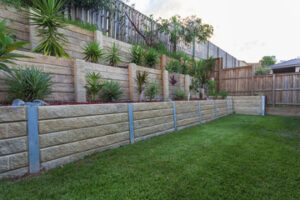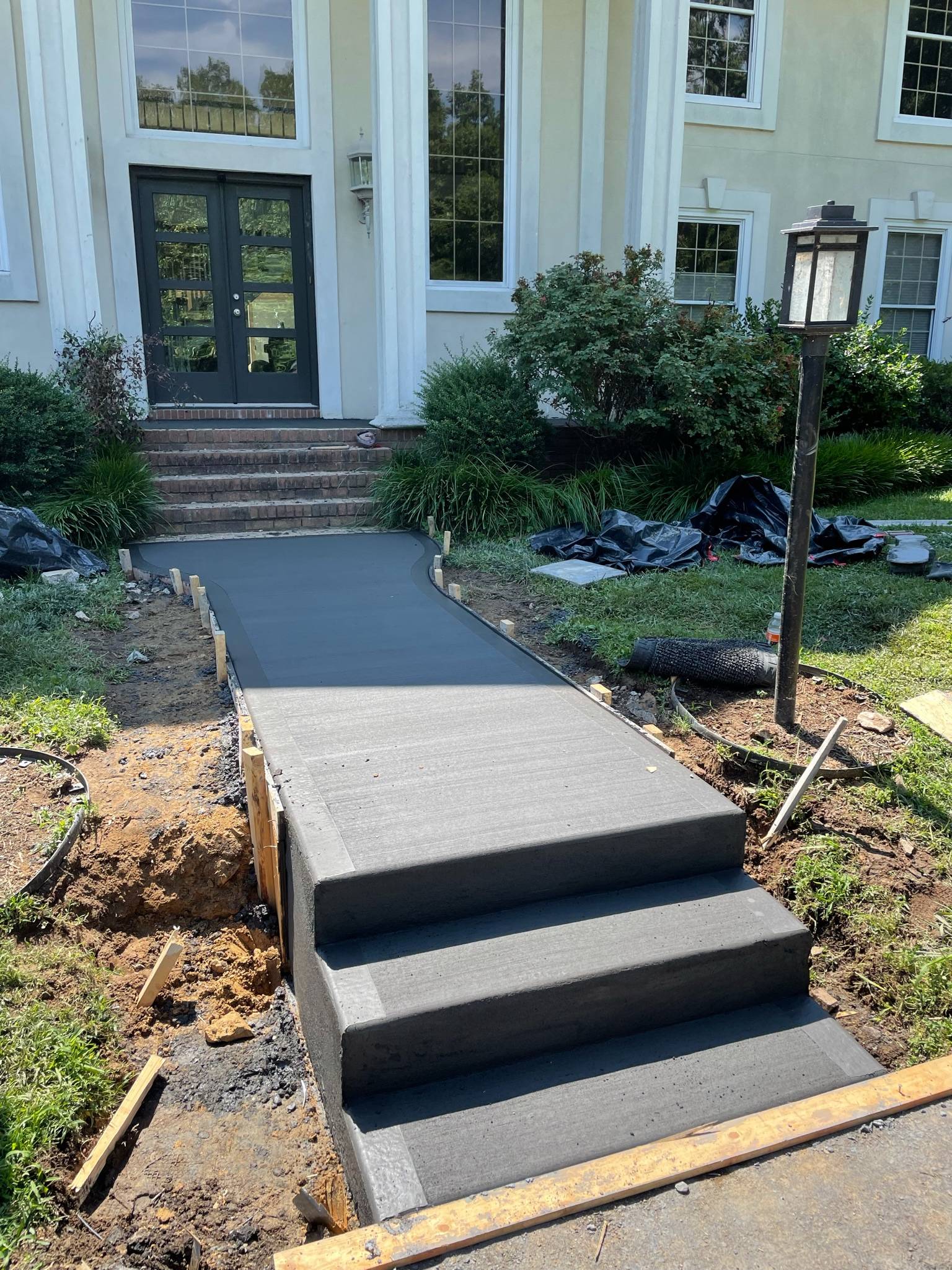Identify the type of wall you want and then research pricing for stone, wood, concrete blocks, and other materials. Labor costs will also be a factor in your final estimate.
It’s possible to build a simple retaining wall on your own, but taller walls, those made of heavier materials, or walls built on slopes require professional engineering. Keep reading the article below to learn more about Retaining Wall Installations.
When properly designed, retaining walls provide structural stability, prevent erosion, protect roadways and structures and stabilize landscapes. They are also a great way to add beauty and value to your property. There are many different styles of retaining wall to choose from. From modern, flowing concrete designs to stacked stones and bricks, the options are endless. Choose materials that complement the surrounding environment and meet your budget. There are even creative alternatives like corten steel, a type of steel that rusts beautifully.
The design of retaining walls depends on a wide variety of factors, including soil conditions, local regulations and structural requirements. A thorough analysis is required to determine the load capacity of the structure and if it will remain stable over time. For example, the soil’s bearing capacity must be determined, the influence of excavation on the retaining wall height must be considered, and the effect of ground water should be analyzed.
It is important that drainage features are provided to prevent erosion, migration of fines and hydrostatic pressure on the wall. The civil site engineer is typically responsible for designing surface drainage components above, below and behind the retaining wall and the geotechnical engineer is often responsible for foundation preparation and subsurface drainage beneath the retaining wall.
To ensure the longevity of a retaining wall, proper excavation, base course installation, interlocking of segmental blocks and compaction should be implemented. In addition, construction joints should be properly designed and constructed to maintain the structural integrity of the retaining wall. Lastly, the retaining wall should be periodically inspected to verify its continued compliance with the design plans and local building codes.
Depending on the site, a structural engineer may be needed to perform an engineering design for walls with a height over 4 ft. This will increase the cost of the project, but it is essential to avoid costly repairs and removals in the future.
To get started on your retaining wall installation, use a shovel to mark the location of the wall and drive wood stakes at each end. Then, tie string between each of the stakes to create a line that marks the desired height of your retaining wall.
Materials
There are a wide variety of materials to choose from in retaining walls, from poured concrete to natural stone and pressure-treated railroad ties. For most modern retaining wall installations, homeowners prefer concrete block because it offers versatility in design and a range of color options, as well as an easy-to-install construction system. Concrete blocks are available in gray and earthy tones, with textured or smooth faces, and can be found at most home improvement and garden centers. They are also designed with a locking flange along the bottom edge that creates a strong and stable attachment between rows of blocks.
The first step in building a retaining wall is to mark the outline of the structure on the ground using stakes and string. Then dig a trench along the outline to the depth required by local codes or a minimum of 1 meter (3 feet). Once the wall has been built to its final height, the drainage system must be installed. This involves laying perforated drainage pipes and filling the backfill with clean gravel, which will allow water to flow away from the wall and reduce the weight and hydrostatic pressure that can build up behind it.
To ensure that the retaining wall you’re installing is safe, you must follow the installation guidelines provided by the manufacturer of the material. For instance, with a concrete block retaining wall, you should backfill with clean gravel or soil to a depth that’s at least the same as the foundation of the retaining wall, then compact this layer. Backfilling with sand is not recommended, as it can make the wall unstable and can damage the drainage pipes that are installed in the backfill.
If you choose to install a wood retaining wall, you should use a wood preservative that’s made for exterior use and apply it at the start of construction. Then, stain or veneer the walls to add a finishing touch to your project. Stains can give interlocking concrete block walls a rich, warm appearance, while veneers can add the look of brick or stone at a fraction of the cost of traditional mortared masonry.
Installation
A retaining wall adds structure and definition to areas of the landscape that might otherwise be flat or unusable. It can also help with erosion issues by stopping soil movement and reducing the amount of dirt that can wash away in the rain. A retaining wall can be constructed out of a variety of materials, depending on the design and the needs of the landscape. There are several different installation methods as well, including poured concrete, interlocking block, and timbers. Which one is used will depend on the material, the landscape, and how much time and skill you want to invest in the project.
It’s important to get a professional to install your retaining wall. These structures are often built at a height that requires specialized equipment and safety measures. If you decide to do it yourself, be sure to follow all local codes and regulations. You will also need to check with your local utilities department before digging to see what’s in the ground underneath where you are going to be building.
The first step in installing a retaining wall is to prepare the base. This may include digging a trench and adding in geogrid layers to provide stability for the walls. Next, you will install a layer of filter fabric to keep the soil from getting into the structure of the wall. Then you can pour, interlock, or stamp in your chosen material and add rebar as necessary. For larger commercial projects, a structural engineer may need to be involved in the design process.
Once the retaining wall is installed, you will need to backfill the area behind it carefully. Using native soil will encourage the growth of vegetation and prevent erosion. Be sure to include proper drainage by incorporating gravel and weep holes into the design. If you don’t have proper drainage, water will collect behind the retaining wall and lead to cracks, bulging, and eventually collapse of the structure.
Regular inspections of the retaining wall are recommended to ensure that it is still safe and sturdy. Any cracks or other signs of damage should be repaired immediately before they become more serious. The best time to inspect the retaining wall is in the spring or fall when the weather is milder and it is easier to access difficult to work in areas.
Maintenance
Retaining walls are built to last, but like any landscaping element they will require routine maintenance to keep them looking their best and in good condition. Retaining wall maintenance includes a variety of tasks, depending on the type of retaining wall and what its purpose is for your property. If you want your retaining wall to continue performing its job of holding back soil and preventing it from collapsing or sliding downhill, you need to perform these routine maintenance activities on a regular basis.
The first step in maintenance is to inspect the wall on a regular basis. Look for damage from storms, soil erosion, improper drainage and more. Even if the damage isn’t immediately obvious, it can have long-term consequences for your landscape and your safety.
If the retaining wall has been damaged, it’s important to take steps to repair it as soon as possible. This can prevent it from becoming worse and causing more extensive damage to your yard or other parts of your home. It can also protect you from injury or property damage in the future.
Some retaining walls have plantings growing around them, and the roots help to hold the soil in place and reduce erosion. If you notice that the plants are starting to die or aren’t growing as well as they should be, it’s important to replant them as soon as possible. The roots of these plants are the foundation of your retaining wall, and without them, it may start to erode and fall.
Another key part of retaining wall maintenance is to check the surface areas that were disturbed during construction. These should be finished with paving, landscape plantings, mulch or sod to protect and improve the appearance of your property while providing a function for the retaining wall. Check these surface treatments every spring to make sure they are still in good shape and that they’re thriving.
Waterproofing is also important for retaining walls, as leaks can cause serious problems. You should have the waterproofing inspected and, if necessary, reapplied. You should also keep an eye out for depressions in the soil that could become filled with rainwater and erode the blocks of your retaining wall.

